A complete guide to heathland golf courses
Alternating purple seas of heather with verdant patches of trees, deep bunkers, fast fairways and sandy, uneven terrain, heathland courses combine the best of links and parkland golf.
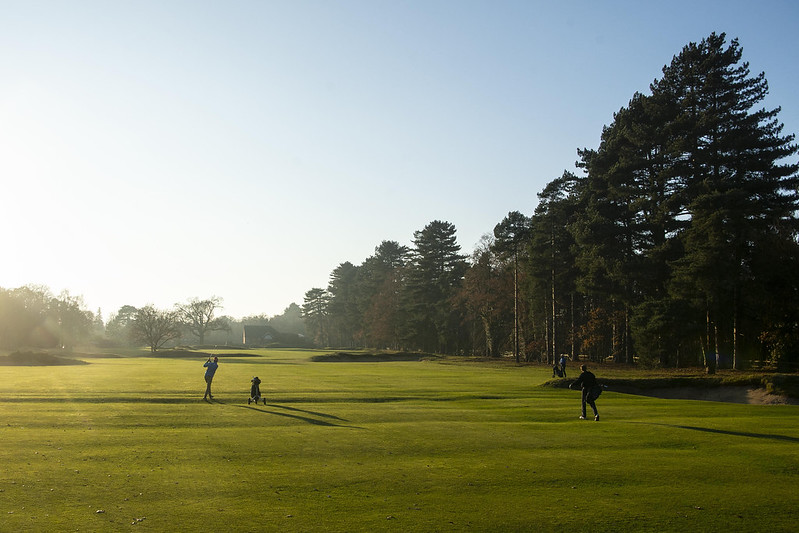
This unique blend of features will suit both casual players looking for a relaxing golf break surrounded by nature and seasoned players eager to test their skills with insidious natural hazards.
However, by incorporating elements of both links and parkland golf, heathland courses can also present a mixed set of turf maintenance challenges.
The best strategy to address them and simplify turfcare? While we recently covered some essential tips in a general guide to different golf course types, here we’ll dive deeper into the details.
Read on to learn more about the history and key characteristics of heathland courses and discover effective solutions to common maintenance challenges.
The history of heathland courses
Heathland golf first appeared in the late 19th century when course architects sought to recreate the feel and aesthetics of links courses away from the rugged coastline of Scotland – where the game was traditionally played.
Because of these requirements, heathland courses are found in inland areas of the UK recalling that unique links golfing experience: that is, regions with sandy soils, uneven terrain, and low-growing vegetation.
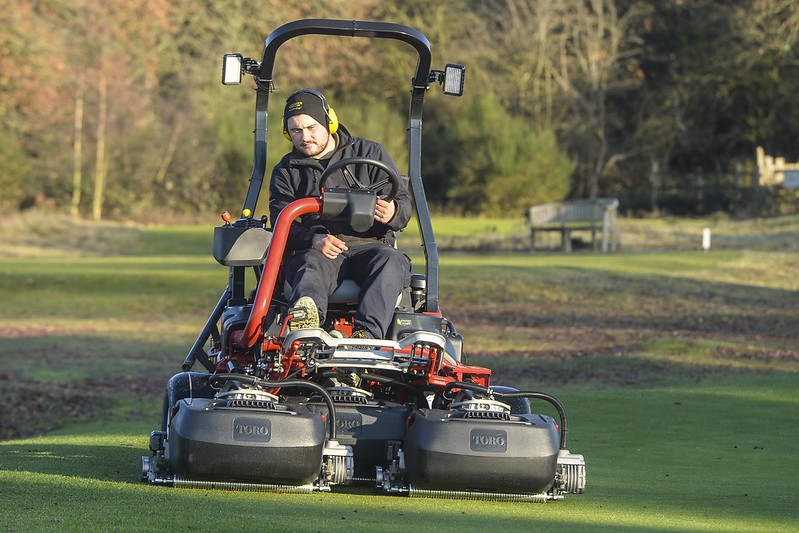
Golf course architects Harry Colt and James Braid were instrumental in shaping heathland golf the way we know it today, with course design that rewards strategic shot placement and precision.
To realise this vision, they incorporated flowing fairways, deep bunkers, and minimal tree coverage, while also relying on the natural heathland environment and native plants to avoid excessive landscape alterations.
Walton Heath in Surrey is one of the most notable examples of this type, with two famous courses designed by Herbert Fowler, respectively in 1904 and 1913, that enthralled generations of golfers. Woodhall Spa is another prime example of impeccable heathland course design in the heart of Lincolnshire and home of the English Golf Union.
What defines a heathland golf course?
The name comes from the type of land these courses are built on, so you can expect typical elements of heath landscapes to feature around the course.
Thick swathes of heather and gorse often frame open fairways with bright hues of purple and yellow, while sandy, uneven surfaces recreate a rugged aesthetic reminiscent of coastal links golf. The main difference is that, similarly to parkland golf, these are inland courses.
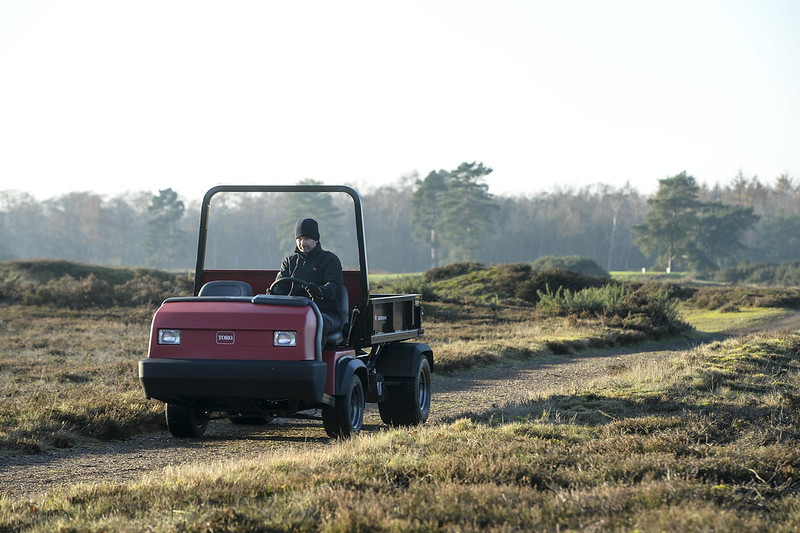
But while parkland golf has a manicured look, with flat surfaces and narrow fairways framed by lush woodland, heathland golf courses are defined by open spaces, multi-tiered greens, and low growing vegetation, with trees appearing mostly in the background.
The blend of understated wild beauty and challenging playability, resulting from natural hazards, makes playing golf on heathland courses a real delight which is why they are often the most unforgettable courses in many British golf tours.
Let’s examine the elements that make heathland golf so special.
Sandy soil
The acidic, sandy soil of heathland courses is a key element defining these landscapes. Poor in nutrients, this soil allows only a few selected species of shrubs and grass to thrive naturally.
On the other hand, this soil composition leads to firm turf, hard playing surfaces and fast fairways or greens. This means increased bounce and roll that reward strategic play and precise shots.
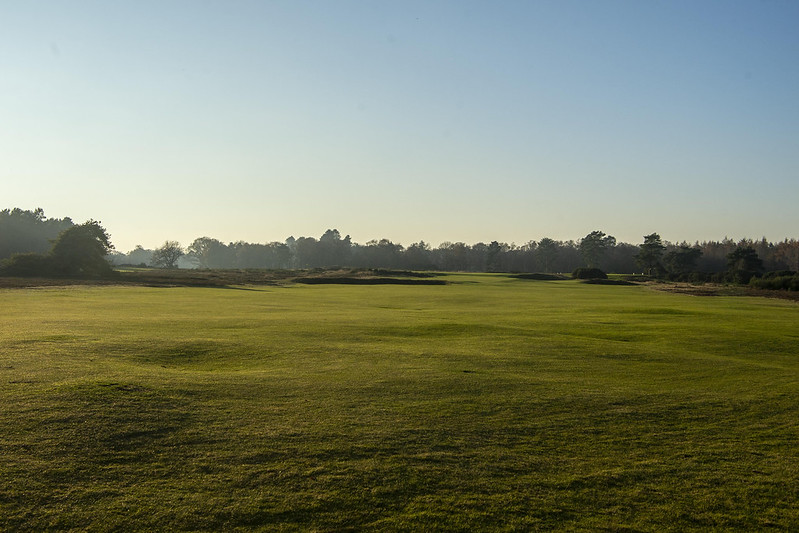
And as the sandy nature of this soil type offers excellent drainage, heathland courses are less impacted by wet weather conditions in the winter.
Heather and gorse
When thinking of heathland golf, the first thing that comes to mind is the presence of purple strips of heather framing the course, as well as yellow gorse bushes and tall fescue grass texturing the rough.
These plants not only create a visually stunning landscape but also act as natural hazards, requiring a conservative style of play to avoid being stuck in a thick patch of shrubs!
Open, rolling terrain
Uneven surfaces with subtle elevation changes, humps and slopes are a staple of heathland golf.
The unique topography of these courses adds strategic depth to each shot, creating memorable holes and exhilarating games.
A great variety of challenging greens enrich the golfing experience – from hilltop greens perched on small plateaus to multi-tiered greens nestled in natural depressions. Each game will be delightfully unpredictable.
Limited tree coverage
Compared to their parkland counterparts, heathland courses are more open, with scattered clusters of pine trees, birches, and oaks rather than dense woodlands.
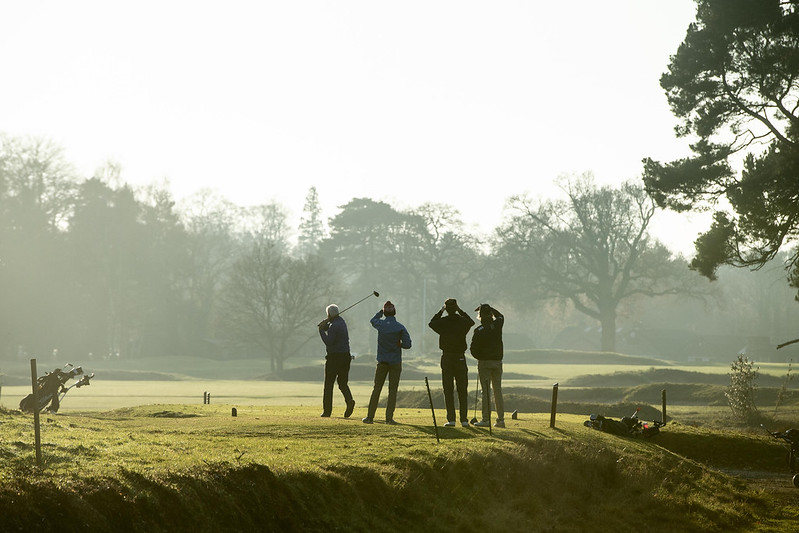
Trees here tend to be sparser or sit in the background rather than framing fairways and other parts of the course – an important role reserved for heather and gorse bushes.
This limited tree coverage means players often have multiple shot options, with more strategic sightlines and more recovery opportunities after inaccurate shots from the tee.
Links-style bunkers
Due to similarities in the type of soil and landscape, bunkers on heathland courses resemble the feel and aesthetic of links’ bunkers, blending in seamlessly with the natural landscape.
Rather than being placed strategically to punish errant shots like in parkland golf, these deep pot bunkers are more organically integrated into the course, occasionally concealed by surrounding slopes or shrubs.
The firm soil of heathland courses, however, means that shots are harder to control, and balls can roll into nearby bunkers more easily, especially when playing in drier conditions.
What complicates maintenance in heathland courses?
Maintaining a heathland golf course presents unique challenges due to its native vegetation, dry soil conditions and irregular terrain.
Here are some strategies and tools course managers can use to simplify turf management.
Managing shrub growth
Heather, gorse, and other shrub varieties give heathland golf clubs a distinctive look that sets them apart from other course types.
For ordinary maintenance, occasional pruning with shears or brush cutters is all that’s required, as these plants thrive naturally in heathlands without much human intervention. Should you need to step in to control growth this is easily done with a rotary mower. This will do an effective job of topping the shrub to a reasonable height and is best done in the spring or autumn after the plant has flowered without any evident detrimental effects to its growth or vigour. The Toro Groundsmaster 3300 is ideal with its flail deck option enabling easy mowing through coarser grass and small plants while the CrossTrax all-wheel drive gives superior traction to move effortlessly across steep elevation changes.
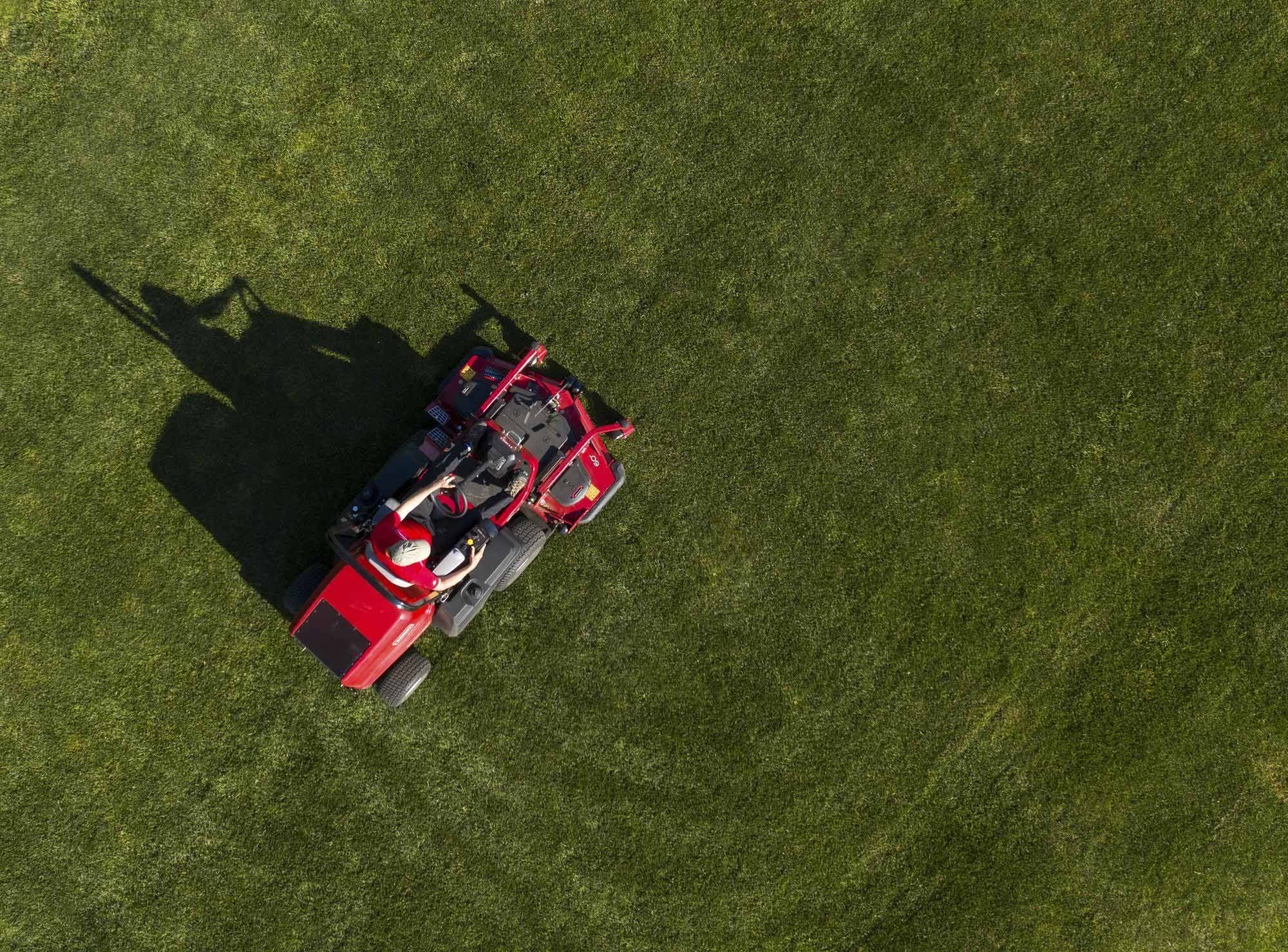
Soil and irrigation management
The sandy soil of heathland golf courses offers excellent drainage and playability all year round, but without proper care, it can become dry and nutrient-deficient.
Course managers can leverage soil conditioning techniques such as topdressing and solid tine aeration to mitigate these issues. For instance, the Toro ProPass 200 is often chosen to improve turf appearance and fertility thanks to an intuitive operating system that simplifies the topdressing process delivering a perfect spread every time, with repeatable settings for consistent operation and defined edges.
Aeration is an essential practice to reduce thatch, relieve soil compaction and promote an optimal circulation of nutrients within your turf. However, the use of hollow tines should be minimised in heathland courses because it may exacerbate moisture loss in an already dry, sandy land. Solid tines are a better option to unlock the benefits of aeration without negatively affecting your water management efforts; you can find more tips in our complete guide to tines.
Cutting-edge sprayers are another vital resource to support turf health. Toro’s Multi Pro 5800-G is the market leader in turf sprayers, designed to offer consistent and accurate spray rates to feed the grass with fertilisers and protect it from pests.
And what’s best, the machine can be equipped with Toro’s GeoLink, a sophisticated satellite communication system that gives precise location data to map each area and spray with sub-inch precision, offering significant time and resource savings. Learn more about this incredible technology and how it makes spraying protocols easier here.
A modern irrigation system like Toro’s Lynx Central Control can be another game-changing tool, allowing you to monitor your course water needs in real time and set up a tailored irrigation plan to optimise your resources.
Its innovative features made a big difference in Woodhall Spa, where the Lynx system and 170 Infinity sprinklers now irrigate the greens, tees and fairways of both the Hotchkin and Bracken courses.
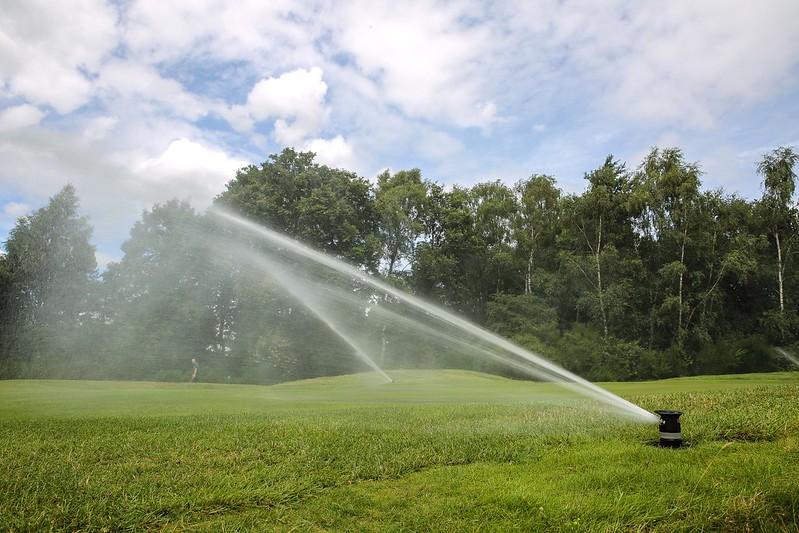
Richard Latham, the club’s general manager, explained: “We don’t have much water here, so we have to be frugal in how much we apply. The installation of the system has allowed us to be entirely accurate and conserve our usage. It allows us to avoid damage in times of water shortage – we may lose the colour but keep the coverage. To have extended the irrigation system to the fairways now means we have complete Toro protection.”
Toro’s Turf Guard moisture sensors can be leveraged in combination with Lynx, to feed the system real-time data about your course’s conditions, or even as a standalone network to optimise the use of your conventional irrigation system. By monitoring the moisture and temperature of your playing surface 24/7 and displaying that information in an intuitive web-based interface, Turf Guard sensors enable you to promptly adjust your irrigation schedule to avoid over- or under-watering, promote root growth and even track salt build-up – so you can schedule flushing as needed. On top of that, the sensors are 100 percent wireless, meaning that the installation is extremely easy and fast, with no wires or cables required.
Mowing greens and fairways
While greens and fairways must be mowed frequently to maintain the looks and playability expected by club members, the uneven, hilly terrain of heathland courses can complicate turfcare operations on a heathland course.
Combining power, precision and fuel efficiency, a cylinder mower like Toro Reelmaster 5010-H can be the ideal choice for rolling fairways. Its 24.8hp hybrid engine saves on average 20 percent in fuel usage by drawing power from a self-recharging 48-volt battery pack to generate up to 40hp only when you need that extra boost of power going uphill.
Additionally, the Smart Power features ensure consistent cut quality by adjusting ground speed based on mowing conditions, and the electronic cruise control helps maintain a steady pace, reducing operator fatigue even on large, undulating courses.
And when it comes to greens, it’s hard to beat the compelling benefits of the Toro Greensmaster TriFlex 3420 Hybrid, which gives you both the superior precision of a pedestrian mower and the unmatched productivity of a ride-on machine.
This is possible thanks to its advanced double A-arm suspension system and industry-leading Flex technology – the cutting units adapt effortlessly to even the most challenging terrain, ensuring an exceptional quality of cut and an impeccable appearance.
Commenting on the performance of these machines, Pat Swinn, Head Greenkeeper at Rushmere, highlights how Toro’s reliability simplifies the maintenance of the heathland course, “Toro is instrumental in helping us ensure the course is always in impeccable conditions for our members. The machines are very rarely on downtime and, if parts are ever needed, they arrive promptly thanks to distributor Reesink’s excellent service and backup.”
Maintaining the bunkers
Deep bunkers are another iconic feature synonymous with heathland courses, but due to their steep slopes, they can be difficult to maintain. That’s where Toro’s ride-on bunker rake, the Sand Pro 2040Z can be a great alternative to hand tools. It’s up to four times faster than ordinary rakes, ensuring your bunkers are ready for play in no time.
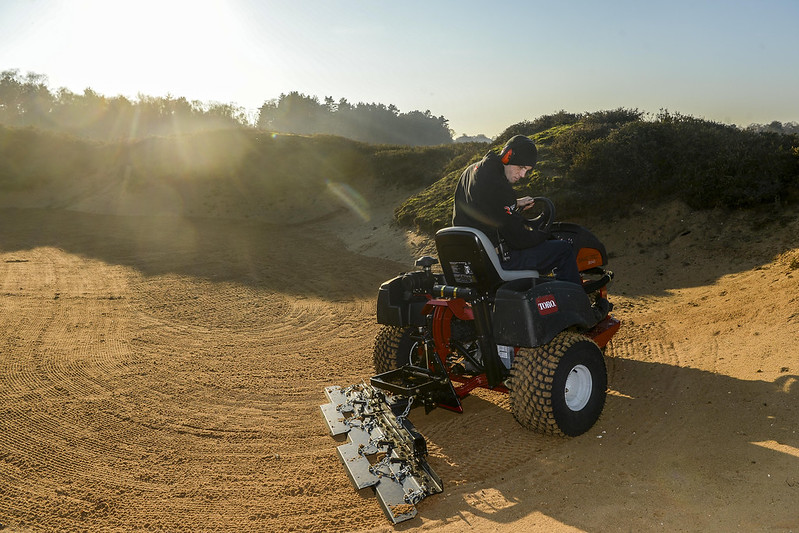
Last but not least, the Sand Pro’s zero-turn design gives unparalleled manoeuvrability to deliver picture-perfect grooming in all sorts of bunkers, even those that are small, tight and have sloped walls – perfect for those heathland bunkers!
Turf maintenance made easy with Toro and Reesink
Golf clubs need to implement meticulous maintenance strategies to optimise turfcare and keep their heathland courses thriving.
Whatever the plan, empowering your greenkeepers with the best equipment available today is key to setting your golf course apart – and when it comes to turfcare, Toro and Reesink make the ideal turfcare partnership.
No matter the challenge, Toro delivers top-of-the-line machines designed to meet every turfcare requirement, always pushing the boundaries of innovation.
Check out our latest articles to learn how Reesink supports your club in choosing the right Toro equipment for your unique situation. You’ll also find expert turfcare advice and more information on other golf course types.